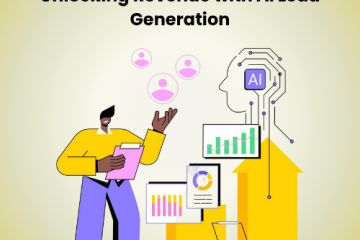Lead Scoring Trends In 2025
In the middle of over-automation & AI everything, one concept still exists in B2B marketing: lead scoring.
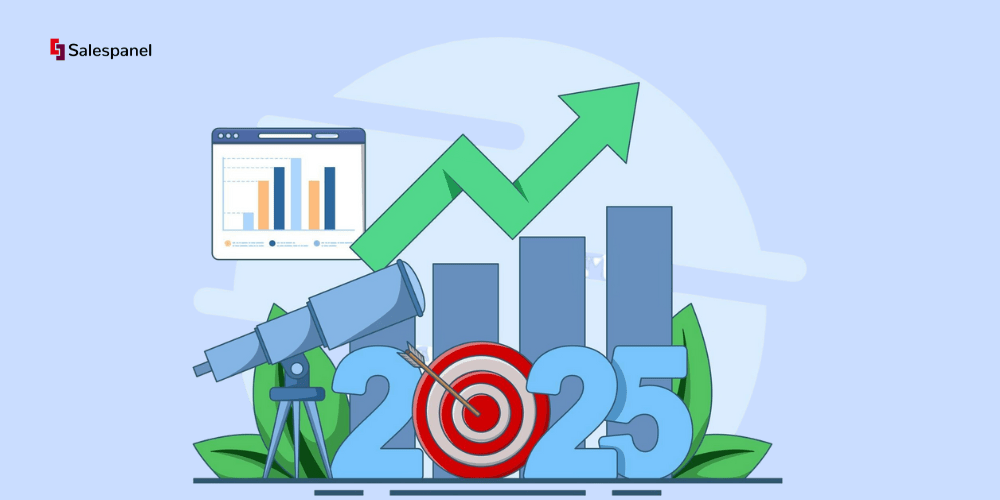
At first, it might sound like an obsolete tactic from the early MarTech days, but that is not the case. Lead scoring has changed a lot. It is no longer simply point systems for emails or ebooks. Now it focuses on real-time buyer intent and doing it before competitors.
This conversation will focus on the evolution of lead scoring in 2025, including what we define as ‘qualifying’. We will examine the tools used and lead scoring will change from the ground up.
What have modern B2B teams from PLG startups to enterprise ABM giants altered in the routing and closing system, and why are older models failing?
Let’s start with the most important question:
In what ways will lead scoring matter in 2025?
In 2025, lead scoring will remain not only relevant but also essential.
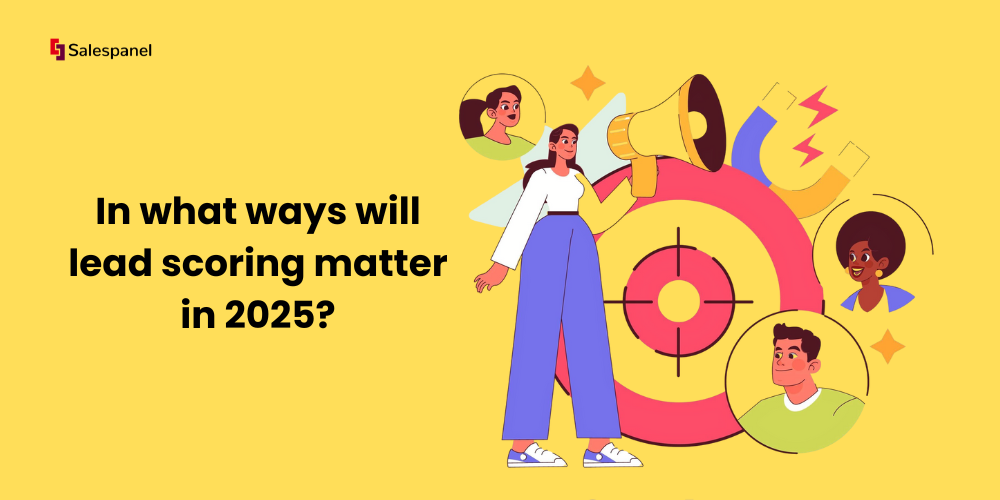
B2B buyers continue to evolve. They now do silent research, evaluate several vendors simultaneously, and surface to sales teams much later, if at all. In this environment, marketers are not facing challenges related to a lack of leads. They are struggling with an excess of the wrong leads!
Data, as well as tools, have exploded. Every signal, including page visits, video watches, job changes, and LinkedIn engagements, is trackable. However, trusting all of these signals to mean something is dangerous; this is where lead scoring comes in—not to track more, but to prioritize better.
To put this into perspective, lead scoring was a map in 2015, and is now a GPS with real-time traffic updates in 2025. The objective is no longer just to get to a lead; it has now become a race against time to get to the lead before the competition while avoiding the competing context.
The following statements outline how the need to score leads hasn’t changed, but the methods have:
Gut feeling is augmented by AI
First-party data surpasses third-party enrichment
Engagement quality surpasses quantity
B2B website visitor tracking blurs the lines of ‘visitor’ and ‘lead’
In the current B2B landscape, scoring is not a static stage gate. It has transformed into an always-on prioritization mechanism that drives SDRs, campaigns, and guiding pipeline forecasts.
The Evolution of Lead Scoring: 2005 → 2025 — And Why It’s Entering a New Era

2005–2012: The Rule-Based Foundations
In the early days, scoring leads was based on rigid rules. Marketing teams had rule-based systems in place with platforms like Eloqua, Pardot, and HubSpot. They operated on simple frameworks like:
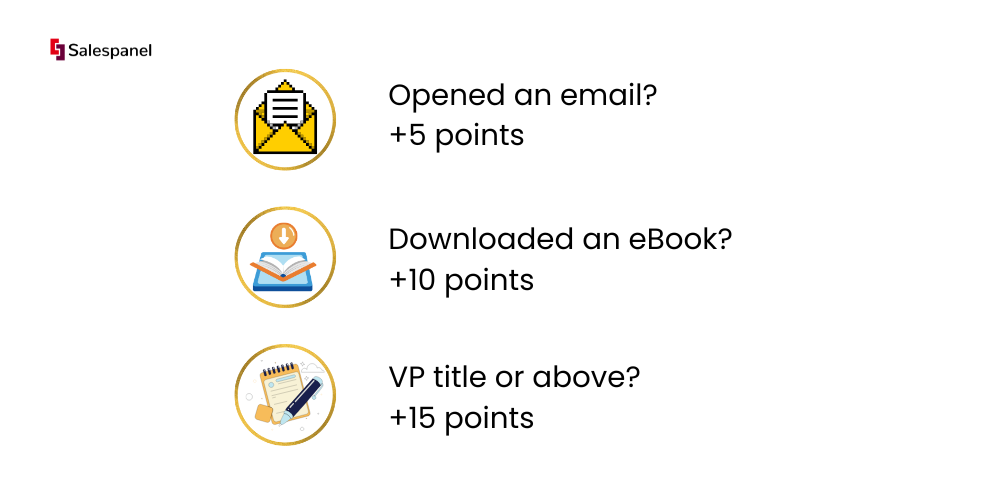
These frameworks were too simplistic. The downside was that all candidates who downloaded content were treated as valuable leads, regardless of their actual status, which in many cases was just a researcher or student.
2013–2019: Predictive Models and the Search for Pattern Recognition
This phase saw the introduction of predictive scoring, which was focused on analyzing close-won historical data to look for patterns that would otherwise go unnoticed using machine learning.
With this came Infer and Lattice Engines, whose goal was to score leads based on calculated probability instead of hunches. While the concept was powerful, the friction stems from the fact that most companies did not have clean CRM data, which these predictive tools required. Additionally, the lack of transparent models and complicated onboarding led to mistrust from sales teams.
2020–2023: Changes To Intent Signals And Shifting Focus To An Account Level
As B2B sales turned into a black box, meaning less communication with the targeted sales teams, marketers started tracking intent data to follow prospective buyers. Early third party and second party intent systems such as Bombora and G2 were useful.
“This account is researching your category.”
The transformation now focuses on accounts instead of singular individuals. ABM became popular. And identifying in-market companies before they filed a form became the new gold
Salespanel and similar platforms bridged the gap during this period. Companies were now able to track first-party intent signals (website activity, content engagement) with real identities. Salespanel provided insight into traffic instead of guesswork, unlike third-party data providers.
2024–2025: The Age Of Real-Time, AI-Native, First Party
This is today.
Lead scoring in 2025 is real-time, AI-augmented, and privacy-conscious. Salespanel is among the tools redefining the standard.
AI Models Are Embedded, Not Optional
Predictive scoring must be included by default now. HubSpot and other CRMs claim to score leads based on engagement. But Salespanel goes deeper by considering firmographic fit, real-time behaviour, and buying patterns in a transparent and customizable way.
First-Party Data is the Source of Truth
First-party behavioural data has become the most accurate signal with the collapse of cookies and new data privacy regulations. Salespanel gathers this information from your website in real-time and associates it with known contacts and companies. It’s first-party data, which is used in a privacy-respecting and intelligent manner.
Scoring is Dynamic, Not Static
Scoring is no longer a one-time calculation. On Salespanel, scores instantly update based on various activities, such as a visitor watching a video or returning to the pricing page after a period of inactivity. These activities can trigger real-time responses from your SDRs or automated workflows designed for nurturing campaigns.
Lead scoring not only has evolved but has also matured into a system that represents a true reflection of the purchasing process. Come 2025, it will be platforms like Salespanel that ensure your scoring model will be based on genuine actions and not irrelevant activities.
Modern Lead Scoring Pillars in 2025
Today, lead scoring is not only about identifying the prospects, but also analyzing what actions they are taking, the timing of the action, and its significance. Let’s explore the four foundational pillars:
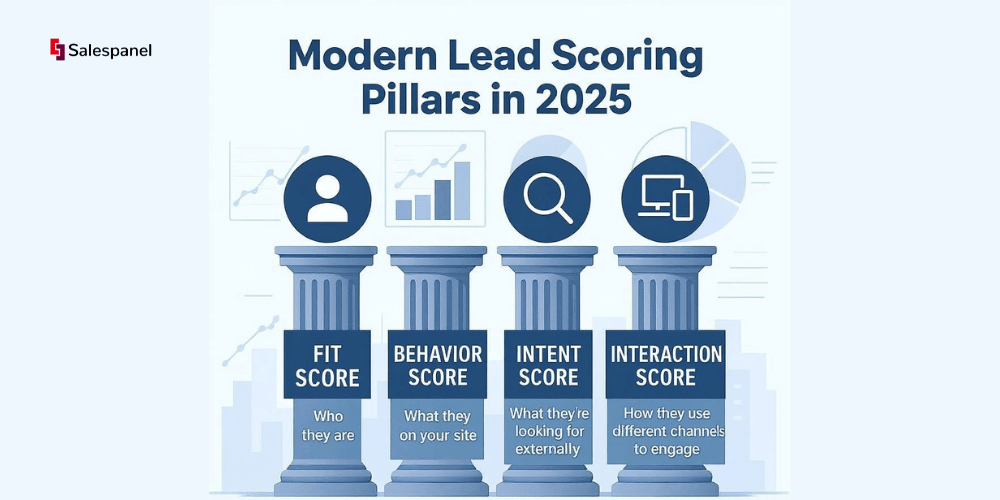
1. Fit Score (Who they are)
This is the classic “ICP match” layer, scoring based on how the lead aligns with your ideal customer profile.
Used signals:
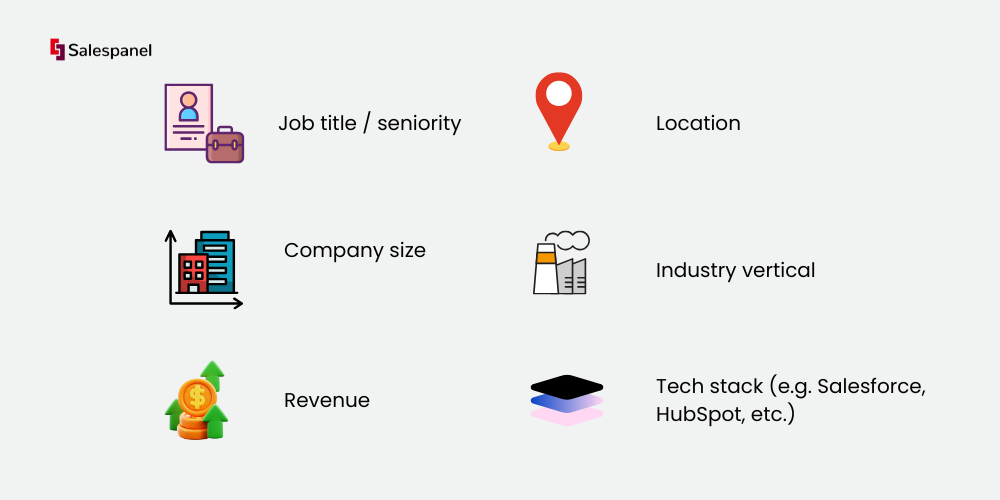
Salespanel and similar platforms use firmographic APIs or CRM enrichment to dynamically enrich information with real-time adjustments based on new data.
Importance in 2025: In a world where AI automations are faster, removing “bad fits” early saves sales teams time.
2. Behavior Score (What they do on your site)
This pillar has seen the biggest changes. It includes the actions of a user on your site and product — in 2025, this will be contextual and event-driven as opposed to form fills.
Signals include:
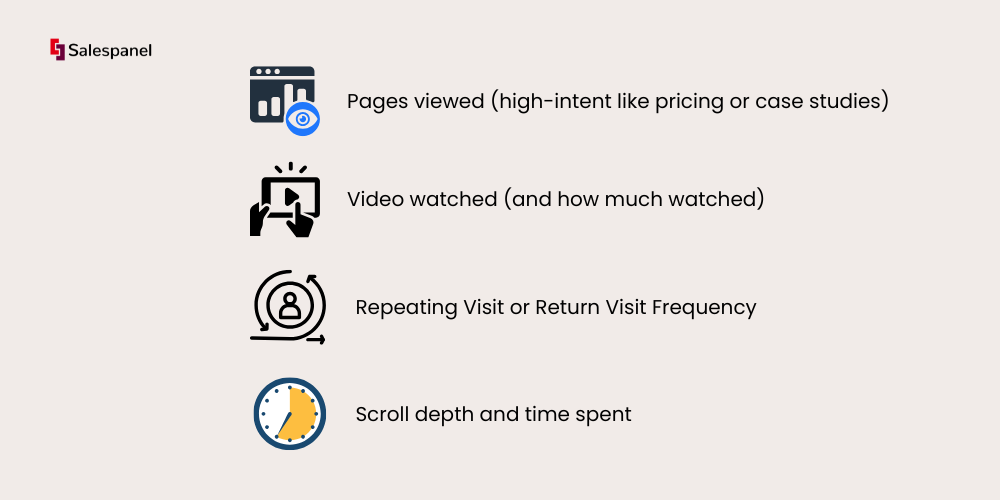
Salespanel tracks all this information in real-time through its visitor tracking engine, even resolving identities with pre-form fill consent, aiding in identifying and demonstrating genuine purchase intent.
Importance in 2025: Buyers leave behind deep intent trails before converting. Most don’t make noise, but behavioural scoring reveals the silent buyers.
3. Intent Score (What they’re looking for externally)
Intent scoring uses information outside your website to see if a given account is searching for solutions that fit your offering.
Signals include:
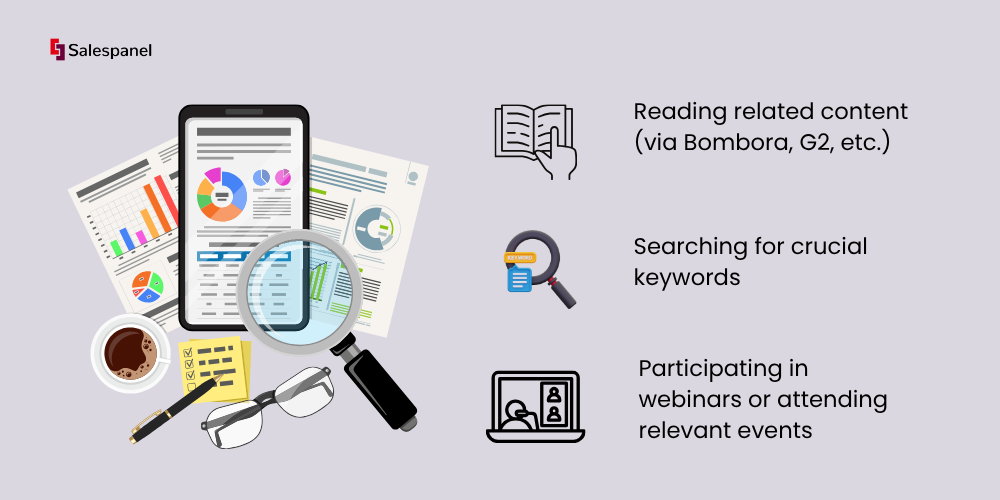
Salespanel, while concentrating on first-party data, can work with intent data feeds to blend outside interest with internal interaction—this creates a potent dual signal.
Why it matters in 2025: Intent data still has some relevance, but only when backed up with real engagement.
4. Interaction Score (How They Use Different Channels to Engage)
B2B buyers have become omnichannel. They might never fill out a form, but they would engage through LinkedIn, live chat, webinars, or product tours. Modern scoring models take into account:
Signals include:
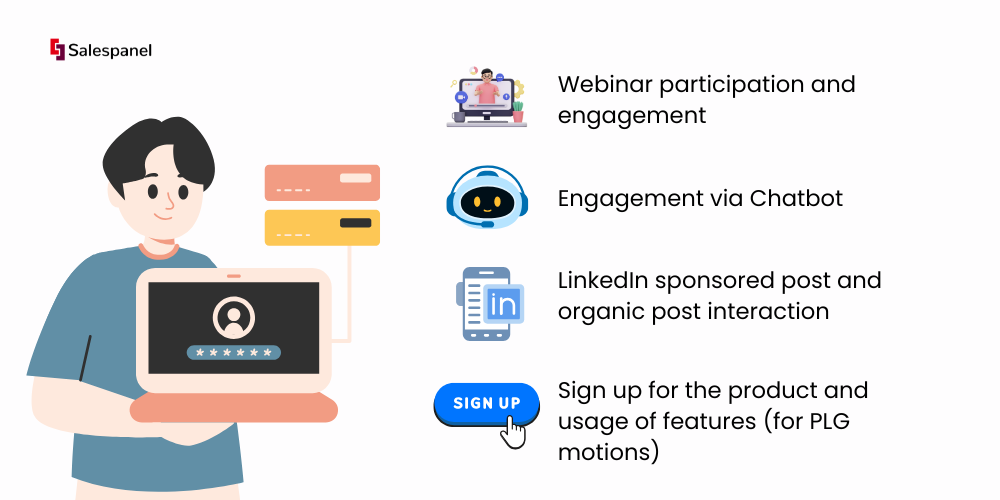
Salespanel enables scoring and mapping of these signals, particularly in multi-touch scenarios where purchases occur over various platforms with multiple decision-makers involved.
Why it matters in 2025: This distinguishes lurkers from real decision-makers using several touchpoints.
Bringing It All Together
Things get interesting when these pillars are integrated. For instance, on Salespanel, leads are scored continuously using a blend of these pillars—real-time calculations with weights defined by your sales motion. This scoring feeds your CRM, triggers sales alerts, and enables segmented campaigns.
Scoring Management and Governance: The New Discipline in 2025
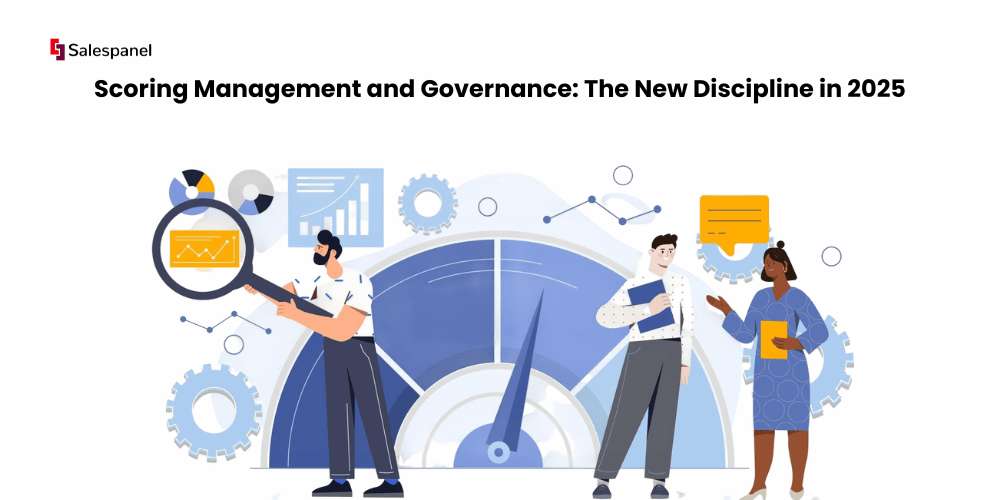
In the past, lead scoring was often set and forgotten. A marketing specialist came up with a rule-based model, and it remained untouched for months or even years. However, in 2025, governance has become the hidden advantage for teams operating high-performance scoring engines.
1. Scoring is Not Static – It’s Iterated Quarterly
Your buyers change. Your funnel changes. Your sales motion changes.
That is the reason modern teams adjust their scoring logic every quarter, like they would with a paid campaign or a sales play. This encompasses:
Analyzing score-to-conversion data
Identifying false positives/negatives
Reviewing weights across behavioural, fit, and intent signals
Salespanel enables this by logging scoring changes and correlating score thresholds with downstream revenue, thus making optimisation data-driven instead of gut-driven.
2. Negative Scoring and Noise Filtering
Lead scoring is just as much about rewarding good signals as it is about disqualifying bad signals. In 2025, high-functioning teams eliminate bad signals to prioritise lead refinement using negative scoring rules long before it reaches sales.
Examples of negative scoring include:
Repeatedly visiting careers or blog-only pages (-10)
Using free email domains (e.g., @gmail) for B2B signups (-15)
Bouncing after landing on homepage (-5)
Interacting with spammy, automated form submissions (-20)
Salespanel’s event tracking allows exact control over such triggers, which helps teams avoid irrelevant contacts and reduce SDR burnout.
3. Threshold Governance: What’s an MQL in 2025?
The definition of MQL is no longer universal. Some companies use MQL → PQL → SQL, while others prefer SDR-ready versus sales-ready.
Having clear, collaborative limits remains essential:
Marketing sets the criteria (score ≥ X + source Y)
Sales confirm quality
Both assess quarterly
In Salespanel, these boundaries are visible and can be modified. Leads can also be routed differently based on which scoring pillar they exceeded: high fit but low engagement goes to nurture, and high engagement but mid-fit goes to SDR.
4. Human Monitoring, Alerts, and Dashboards
Scoring is a multi-faceted process that teams need to implement:
Dashboards display both the volume as well as the score range and conversion rates.
The sales alert system activates once a lead indicates re-engagement (for example, high fit + re-engagement).
Rep productivity is enhanced through Slack/CRM integrations, providing real-time intel.
Salespanel automates the visualisation of the lead journey. This helps easily identify areas that either require scoring adjustments or where leads are stalled.
5. Change Logs and Documentation
In the case of alterations to the scoring model, it is essential that the entire team is informed:
The reasoning behind the adjustments (what issues it aimed to address)
Which weights or criteria were altered
What constitutes achievement (uplift in conversion, improved fit, reduced sales cycle)
Salespanel allows for versioning and note-taking, which helps maintain clarity between the marketing ops and revenue teams.
Governance = Strategy + Discipline
Scoring management is no longer restricted to backend settings. It has evolved into an integral element of your GTM strategy. When executed properly, it drives marketing and sales alignment, enhances funnel health, and accelerates performance across the board.
Emerging Trends That Are Shaping The Future of Lead Scoring
As we look forth into the distance, here is what is on the horizon:
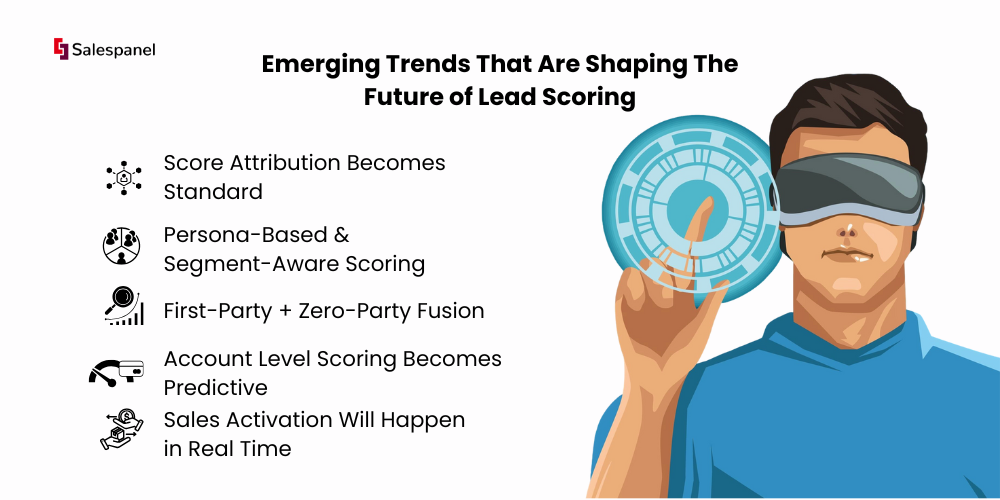
1. Score Attribution Becomes Standard
Organisations always want to know what logic was used in scoring; thus they will ask Why did this lead get 82 points? And which signals contributed the most?
Tools will now be designed to display scoring components, visually aiding trust from the marketing and sales teams. Salespanel already provides a breakdown of scoring logic on dashboards and exports.
2. Persona-Based & Segment-Aware Scoring
Not all ideal customers act the same. Scoring models will be adjusted based on the buyer personas, product lines, or even verticals.
Take, for example:
A CTO at a $1B fintech might differ in score from a Marketing Manager at a $50M SaaS, even if they performed the same actions.
Salespanel already supports persona tagging and conditional scoring by user segments.
3. First-Party + Zero-Party Fusion
Along with tightening privacy laws, the scoring stack will increasingly rely on zero-party data (what users explicitly share — preferences, intent, goals) and combine it with first-party actions.
As a result, look for more lead capture flows requesting:
“What problem are you solving?”
“When are you planning to make a purchase?”
These responses will integrate with real-time scoring logic.
4. Account Level Scoring Becomes Predictive
As account-based marketing develops, scoring will progress from lead to account orchestration:
Multi-contact/Multi-stakeholders activity
Buying committee breakdown
Account-level pipeline forecasting
Salespanel is already laying the groundwork here with timelines at the account level and lead-journey tracking.
5. Sales Activation Will Happen in Real Time
In the not-so-distant future, scoring will no longer be reserved for reporting; it will enable real-time sales triggers:
An engaged dormant lead triggers an immediate SDR alert.
Pricing and return visits trigger personalised outbound.
Speed-to-lead will be seconds, not hours. The line between scoring and outreach will vanish.
In Summary
Your world has changed. Your buyer has changed. You must adapt your lead scoring system.
2025 does not concern the engagement of leads by numbers. It is more about constructing an engine that observes, learns, and prioritises in real-time and on all available channels.
Salespanel focuses on making sure the engine does not go offline, that it is constantly learning, and at all times focused on what truly matters – revenue alignment.
Hope you liked our coverage on what’s changing in lead scoring trends in 2025. If you want to learn more about how we score your visitors, do get in touch through the support desk or simply signup for a trial, and we will get in touch.
Sell more, understand your customers’ journey for free!
Sales and Marketing teams spend millions of dollars to bring visitors to your website. But do you track your customer’s journey? Do you know who buys and why?
Around 8% of your website traffic will sign up on your lead forms. What happens to the other 92% of your traffic? Can you identify your visiting accounts? Can you engage and retarget your qualified visitors even if they are not identified?
